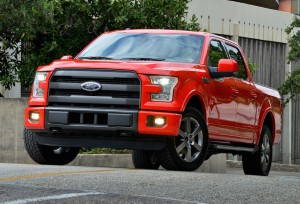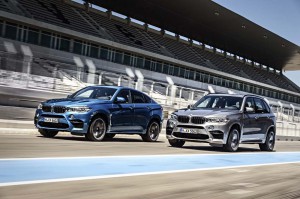Just six years after plunging into its worst downturn since the Great Depression, the U.S. auto industry has staged an unexpected and unprecedented rebound, one that could see 2015 end with an all-time sales record.
And with fuel prices at their lowest level this decade, consumers are shifting back to pickups, SUVs and other higher-profit products that could also translate into a strong, if not record, year for earnings, as well.
“It will be a photo-finish,” to see if 2015 beats the previous record set during the first year of the new millennium, said Stacey Boyle, an analyst with data tracking firm TrueCar, “but it will definitely be the second-highest year.”
Boyle is actually one of the less upbeat analysts. A growing number of observers have been revising their forecasts upward, especially in light of the double-digit sales gains the industry posted in October. The only question is how strong the final two months of the year will be, but the general consensus is for a strong finish barring a major economic shock.
“We expect the current year to exceed the record volume of 17.35M seen in 2000,” writes Efraim Levy, a senior automotive analyst with S&P Capital IQ. “The 2015 tally represents a rare sixth consecutive annual increase, coming off the dramatic low of 2009.”

Alternative-power vehicles have been among the market's few soft spots. Toyota hopes to regain momentum with the launch of its 4th-gen Prius.
Levy has raised his forecast for the full year to 17.4 million from an early projection of 17.4 million. If he’s on target, that would be a 5.9% jump from 2014.
With only a rare monthly exception, the pace of the U.S. automotive recovery has been building all year – and routinely exceeding forecasts. Most experts anticipated an 8% year-over-year increase in October. In fact, demand rose by nearly 15%. For the first ten months of 2016, sales were up 5.8%, reported Focus2Move, an international automotive sales tracking service.
(October auto sales unstoppable. Click Here for a closer look.)
More than a few makers have been reporting all-time sales records in recent months, including brands Audi, Subaru and Jeep. For, Chevrolet and Toyota’s October numbers were the best in a decade.
The Great Recession that drove two of Detroit’s Big Three makers into bankruptcy saw the proverbial perfect storm of problems, starting with a massive economic meltdown. Now, virtually everything seems to now be going right for the auto industry, says TrueCar’s Boyle, point to “increased consumer confidence, low unemployment, low gas prices, low interest rates and increasing incentives.”
(Low gas prices fuel strong car sales. Click Here for the story.)
Boyle and others also note that the average vehicle on the road today is older than ever, an average of more than 11 years, according to Polk, a Detroit firm that tracks vehicle registrations. Even with the improved quality and reliability of today’s vehicles, that means millions of motorists need to trade in for something new soon.
And that, observers believe, should keep market momentum building for at least another year. For his part, S&P’s Levy is now predicting demand will hit 17.6 million in 2016. He’d previously been more bearish, with a 17.2 million estimate for the coming year.
Levy isn’t alone. Most analysts predict sales will keep growing at least through 2016, though some anticipate that the market will finally begin to lose momentum the following year. An increase in U.S. interest rates could be one of the critical reasons.
But fuel prices could be another critical factor. And, for now, there seems to be no sign that petroleum will regain the momentum it has lost over the last year, at least not anytime soon, according to various observers.
The downturn in fuel prices has not only helped boost sales, overall, but also encouraged American buyers to shift to generally higher-priced pickups and SUVs, a trend further driven by low interest rates and good factory incentives, analysts note.
“October mark(ed) the 22nd consecutive month of record-setting revenue, and the industry remains healthy even with an uptick in incentives,” said Larry Dominique, head of ALG, the former Automotive Leasing Guide, which closely tracks vehicle pricing. The average vehicle drove off the lot last month for $32,529, a tick short of an all-time record.
The surge in light truck demand has been particularly helpful for Detroit makers. But Japanese brands have also benefited. Among individual brands, Ford led the U.S. industry with a 14.4% share of the market for the first 10 months of 2015, a lead driven by growing demand for its redesigned F-150 pickup.
It was followed, in order, by Chevrolet, Toyota, Honda and Nissan. By manufacturer, General Motors remained in the lead with 17.7%, though Ford was closing at 15.0%, with Toyota a strong third with a 14.3% share of the American auto market.
(After unexpected slowdown, China auto sales post massive October rebound. For more, Click Here.)


